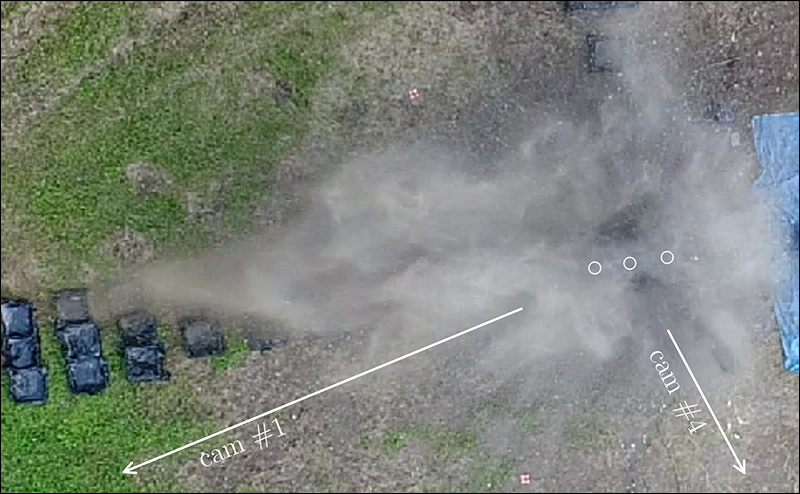
The workshop was aimed at both providing an opportunity to build bridges across disciplines and assessing the significance of large-scale experimental approaches at shared facilities.Explosive volcanic eruptions are difficult to study because of their inherent dangers and unpredictability. To address these challenges, a recent report by the National Academy of Sciences’ Committee on Improving Understanding of Volcanic Eruptions discussed the benefits of developing community-based, interdisciplinary research approaches and shared facilities. Motivated by this report, the University at Buffalo in New York held a workshop aimed at both providing an opportunity to build bridges across disciplines and assessing the significance of large-scale experimental approaches at shared facilities.
An earlier workshop identified the following reasons for conducting large-scale experimental studies:
Eruptions typically involve multiphase, nonisothermal processes with complex rheology and other material properties. For some processes observed in the field, there are too many coupled scales to allow realistic scaling to studies in the lab. Large-scale experiments enable data collection on processes with many of the complexities but with controlled initial and boundary conditions. Deposits in the field are an important way to gain insight into eruption processes: Large-scale experiments can be used to relate these deposits to volcano dynamics. Numerical models are key to understanding eruption processes: Large-scale experiments that can produce phenomena that include all the “terms” in modeled governing equations provide an important tool for validating these numerical models. Monitoring and sensor technologies need to be tested: Large-scale experiments provide a way to test technologies in a messy but controlled setting. Drone view of the same debris jet, showing directions to cameras 1 and 4 and locations of the explosive charges (open circles). Credit: Julie Oppenheimer
Drone view of the same debris jet, showing directions to cameras 1 and 4 and locations of the explosive charges (open circles). Credit: Julie Oppenheimer
To test the effects of these driving reasons on experimental studies, the workshop included a day of experiments related to explosive eruptions. Attendees carried out four experiments that each consisted of detonating a sequence of buried chemical explosives, which generated blast waves, directed debris-laden jets and plumes, caused small-scale density currents, and resulted in craters and ejecta deposits.
Data were recorded from a pool of sensors, including high-speed, multiangle, ground– and drone-based video; thermal infrared video; electrostatic field sensors; and both seismic and acoustic sensor arrays. The latter two were closely coordinated, so that the experiments provided a unique seismoacoustic data set for analysis and model validation. Researchers also collected data by sampling ejecta and fallout and by analysis of ground morphology both before and after the experiments (both ground and drone based).
 Time-history plots of near-field ground deformation and electrostatic field (both uncalibrated, in volts). Credit: Ingo Sonder
Time-history plots of near-field ground deformation and electrostatic field (both uncalibrated, in volts). Credit: Ingo Sonder
The 47 participants included geologists and geophysicists, and both graduate and undergraduate students participated alongside faculty investigators. The open-invitation experiments provided valuable student training and practice. One participant brought two graduate students to the workshop and observed that the workshop’s experiments gave the students a chance to set up their seismic array exactly as they would at a volcano. Thanks to this workshop, the students will have hands-on experience when they deploy at a volcano in the future.
Workshop attendees also valued the opportunity to network with researchers in different disciplines. As several institutions build their capabilities in large-scale experimentation on volcanic processes, participants suggested that experimental runs be opened up to the community so that other researchers can piggyback and gather data that would otherwise not be collected. Attendees committed to sharing data and coordinating analyses in future research based upon the four experiments, carrying the interdisciplinary approach of the workshop into their ongoing work.
This workshop was sponsored by the Petrology and Geochemistry Program at the U.S. National Science Foundation and coordinated by the University at Buffalo’s Center for Geohazards Studies.
—Greg Valentine (gav4@buffalo.edu) and Ingo Sonder, Center for Geohazards Studies, University at Buffalo, N.Y.
The post Facilitating Field-Scale Experiments in Volcano Hazards appeared first on Eos.
from Eos https://eos.org/meeting-reports/facilitating-field-scale-experiments-in-volcano-hazards?utm_source=rss&utm_medium=rss&utm_content=facilitating-field-scale-experiments-in-volcano-hazards
via IFTTT
